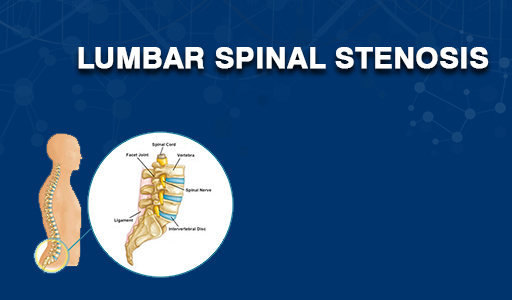


Stenosis means refers to the narrowing or tightening of the spinal canal in the lumbar or lower back region. The spinal canal is the bony tube in which the spinal cord and the nerve roots travel. The narrowing of this canal results in pressure on the spinal cord or spinal nerves causing various symptoms like pain, stiffness, and incontinence.
Causes of Lumbar Spinal Stenosis
Like the rest of the bones of our body, the spine also undergoes degenerative changes due to age. It is normal to wear and tears the effect of aging that can lead to stenosis. In such cases, spinal stenosis usually occurs after the age of 50. But some patients may develop stenosis in the lumbar region early in their life due to any of the following reasons:
• Genetically a person may have a smaller sized tube in the spine (spinal canal)
• Congenital spinal canal abnormalities
• Arthritic changes such as o Bone spurs o Thickened ligaments o Joint laxity o Bulging of disc
• Disc herniation
• Disc fractures
• Trauma
• Tumor
NA
Symptoms of Lumbar Spinal Stenosis
In some cases, the patient does not complain of any symptoms but still, the X-ray or MRI of their lumbar region shows stenosis. These patients may remain asymptomatic till the time stenosis causes increased pressure on the nerves. Pressure on nerves or damage to the spinal cord results in the following symptoms:
• Pain in the lower back
• Radiating pain in the buttocks and legs
• Pain is usually felt on standing or walking
• Pain is often relieved by sitting, lying, or leaning forward
• Cramping in legs after prolonged standing or walking
• Burning sensation in the back, buttock, or legs
• Numbness or tingling in the lower back that radiates to buttocks and legs
• Weakness in the lower extremities
• Decreased ability to walk
Diagnosis of Lumbar Spinal Stenosis
The diagnosis of lumbar stenosis starts with complete history taking along with thorough physical and neurological examination. But this is generally not conclusive and the physician performs the following diagnostic tests to get an appropriate and confirmed diagnosis:
• X-Ray
• MRI scan
• CT scan with myelogram ( in case MRI is not possible)
Treatments of Lumbar Spinal Stenosis
Non-Surgical Treatment
Non-surgical treatment options are aimed to reduce the inflammation and swelling around the nerve tissue and hence relieving the pain. Although they are not effective in improving the narrowness of the spinal cord still they are helpful in relieving symptoms. It may include:
lPhysical therapy
lAnti-inflammatory medications
lSteroid injections
lAcupuncture
lRehabilitation
Surgical Treatment
Surgical treatment is for patients with severe pain. They prefer to undergo surgical treatment to get rid of their pain. Surgical options depend upon the cause of pain and may include any of the following:
lForaminotomy
lLaminotomy
lLaminectomy
lSpinal Fusion
The overall results of surgical treatment are good to excellent in most people.
NA
